Physical Address
304 North Cardinal St.
Dorchester Center, MA 02124
This is a system for diagnosing cardiac disease in adults by asking a series of questions in a set fashion , the answers to which are certain fundamental observations made from the frontal chest radiograph alone.
This system is for “adults only.” Infant hearts do not display many of the recognizable contours discussed here, so cardiovascular evaluation in infants depends much more on parameters like heart size, the pulmonary vasculature, the location of the great vessels, and the clinical findings.
It is also suited for those situations in which several measurements can be made using electronic calipers directly on the digital images.
Before discussing the system, we are going to review the answers to the set of questions comprising the system. Those answers are the following set of fundamental observations.
The cardiothoracic ratio is the maximum transverse diameter of the heart divided by the greatest internal diameter of the thoracic cage (from inside of rib to inside of rib) (see Chapter 3 ). In normal adults, the cardiothoracic ratio is usually less than 50%. The cardiothoracic ratio is a handy way of separating most normal hearts from most abnormal hearts. Unfortunately, it has its pitfalls.
Pitfall 1: The heart may appear to be enlarged (i.e., be greater than 50% of the cardiothoracic ratio), but still be a normal heart. This may be due to an extracardiac cause for the apparent cardiac enlargement, such as:
The patient’s inability to take a deep breath because of
Obesity
Pregnancy
Ascites
Or, abnormalities of the chest cage that compress the heart, such as a pectus excavatum deformity.
Solution: Look at the patient. The factors named previously that will truly limit a patient’s ability to take a deep breath will not be subtle findings.
Pitfall 2: Sometimes the heart can appear normal in size (i.e., measure less than 50% of the cardiothoracic ratio), but still be an abnormal heart.
This can occur when there is obstruction to the outflow of blood from the ventricles since the ventricles respond, at first, by undergoing hypertrophy, which does not produce recognizable cardiac enlargement.
Solution: Because not all abnormal hearts are enlarged, recognition of cardiac abnormalities in these individuals depends on an assessment of the contours of the heart ( eFig. B.1 ).
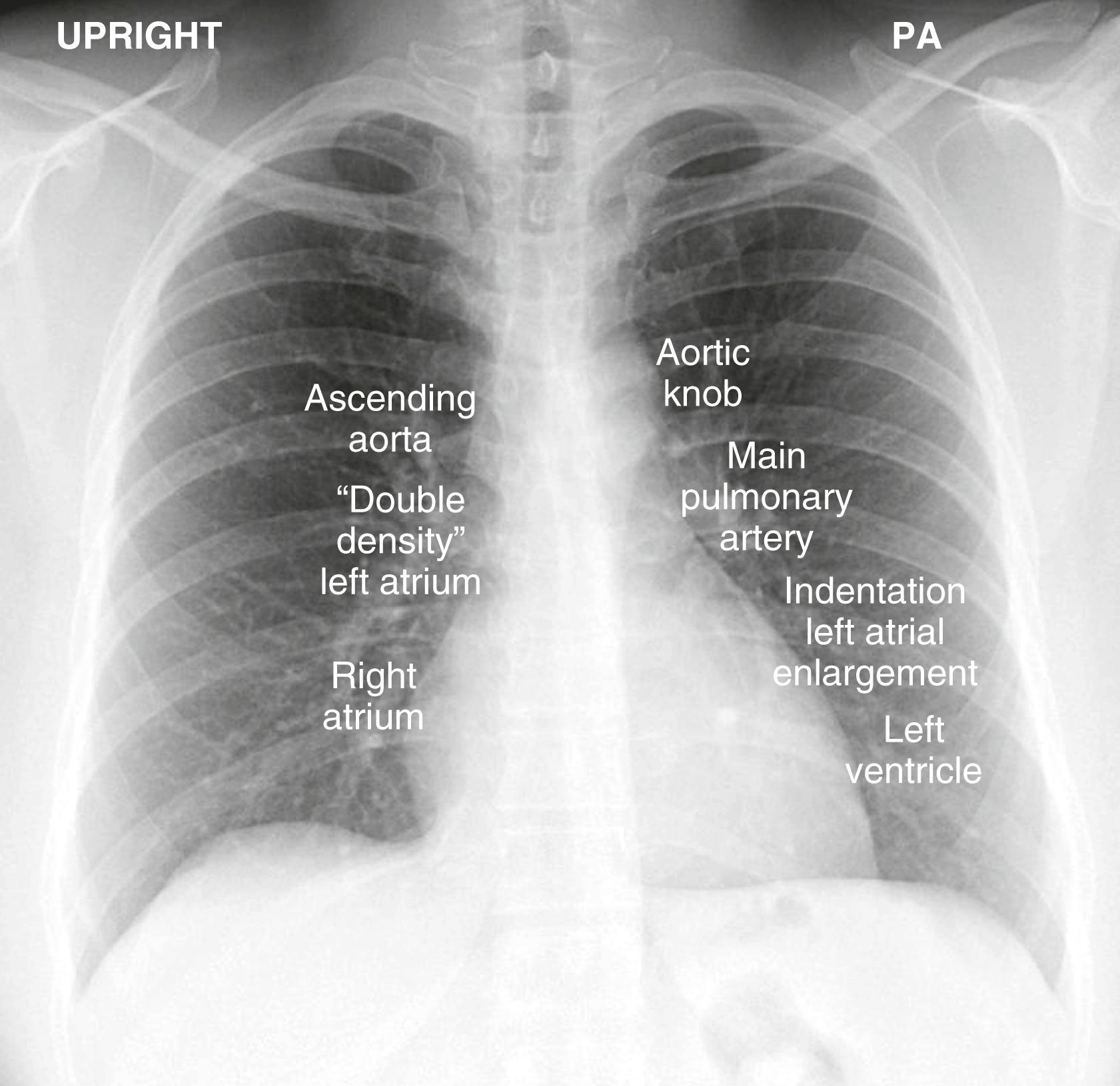
There are seven identifiable cardiac contours on the frontal chest radiograph
The first contour on the right is the ascending aorta. It is a low-density, almost straight edge visible just to the right of the trachea reflecting the size of the ascending aorta ( eFig. B.2 ).
Anatomically, this contour really represents the superior vena cava and brachiocephalic vessels but, for all practical purposes, it reflects the size of the more medially placed ascending aorta
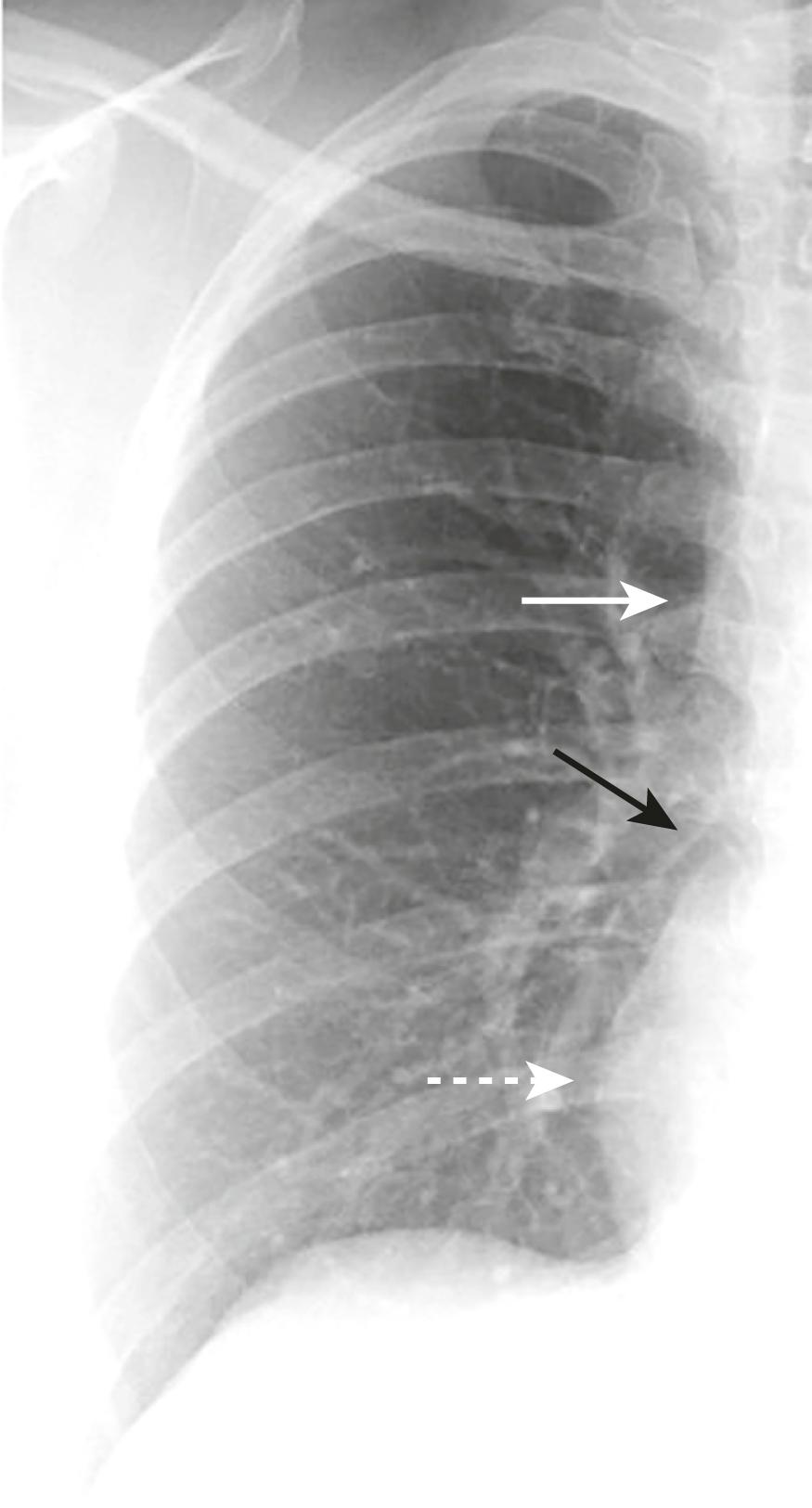
The ascending aorta can be small as it is in atrial septal defect (ASD) or it can be prominent as it is in diseases that increase the pressure or flow in the aorta or affect its elasticity like aortic stenosis, aortic regurgitation, and atherosclerotic cardiovascular disease.
The normal ascending aorta should not project farther to the right than the right heart border on a nonrotated frontal radiograph ( eFig. B.3 ).
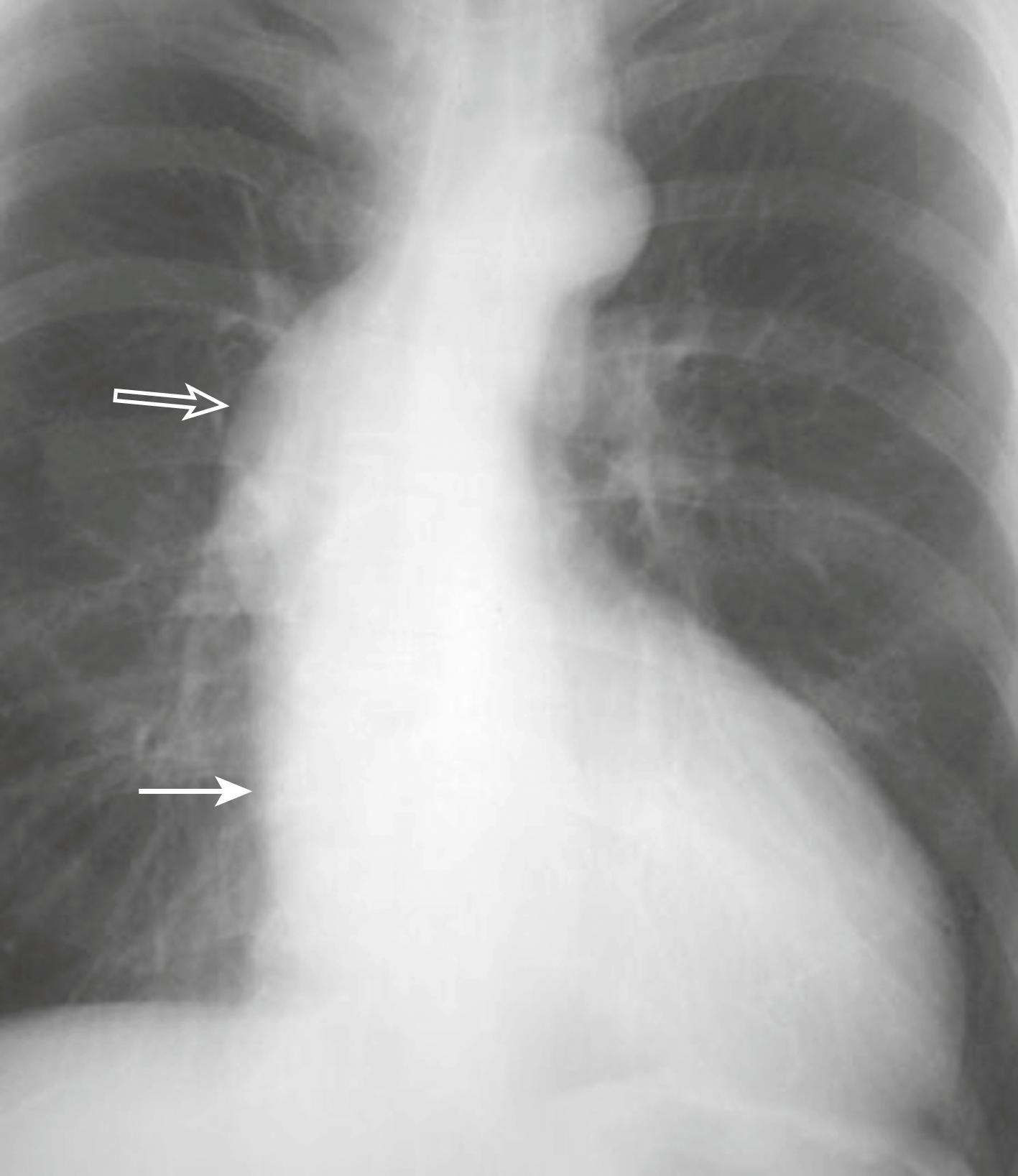
Where the contour of the ascending aorta meets the contour of the right atrium, there is normally a slight indentation (see eFig. B.2 ).
In patients with an enlarged left atrium , the right lateral wall of the enlarged left atrium may produce one of two overlapping densities in the region of this indentation. One of the densities is normal: it is the contour of the normal right atrium. The other overlapping density is abnormal: it is the contour of the enlarged left atrium ( eFig. B.4 ).
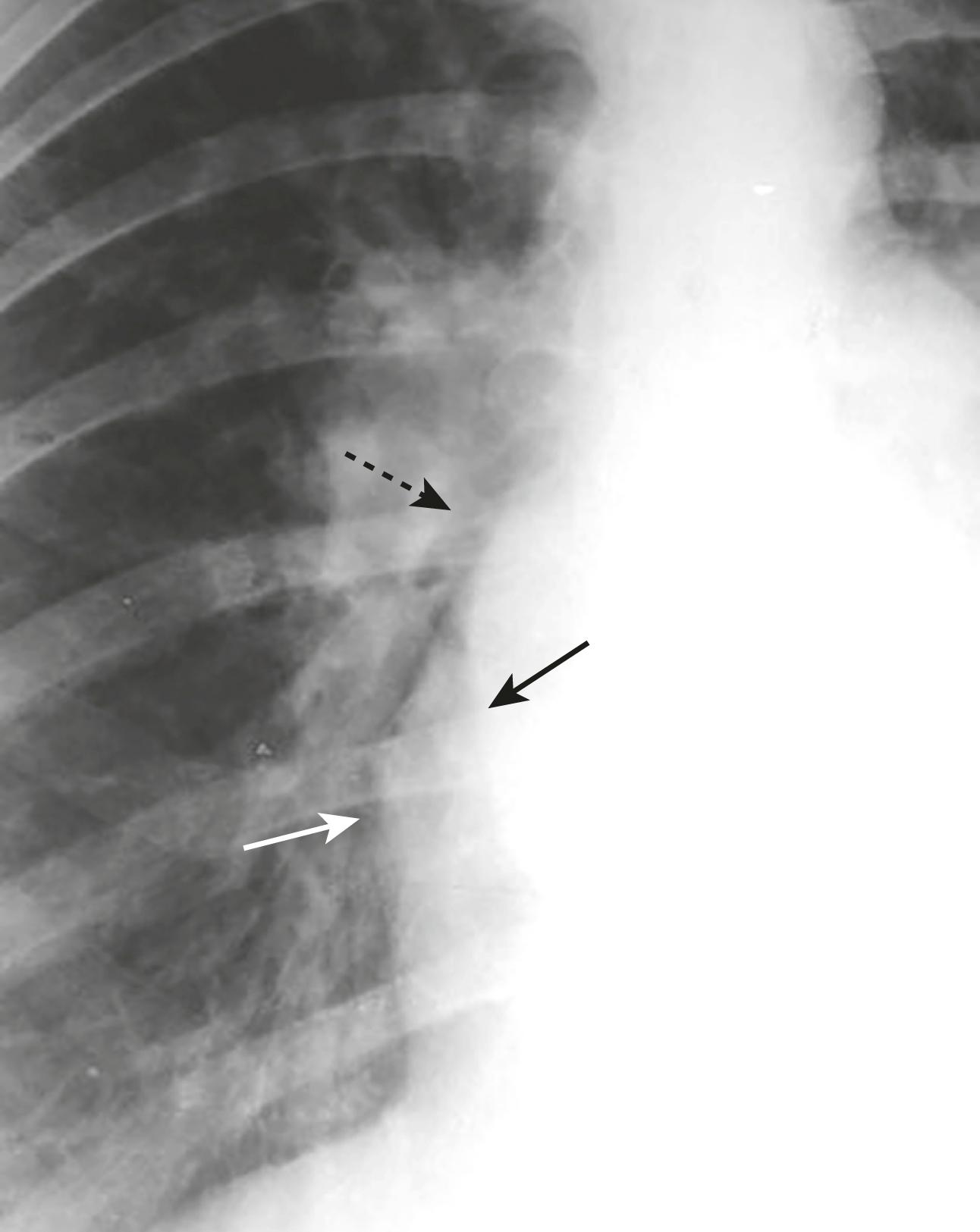
These two overlapping edges are called the double-density of left atrial enlargement.
The right heart border is formed by the right atrium (see eFig. B.2 ).
In an adult, the right atrium will almost never enlarge without concomitant enlargement of the right ventricle.
Therefore, we will consider the right atrium and ventricle together as a single functional unit in adults, and we will estimate right-sided cardiac enlargement in another way described later, but not by the size of the right atrium.
For the purposes of this system, the right atrium is not a key contour.
The first contour on the left side of the heart is the aortic knob. The aortic knob is a radiographic, not an anatomic, structure seen on the frontal chest radiograph and formed by the foreshortened aortic arch together with a portion of the proximal descending aorta ( eFig. B.5 ).
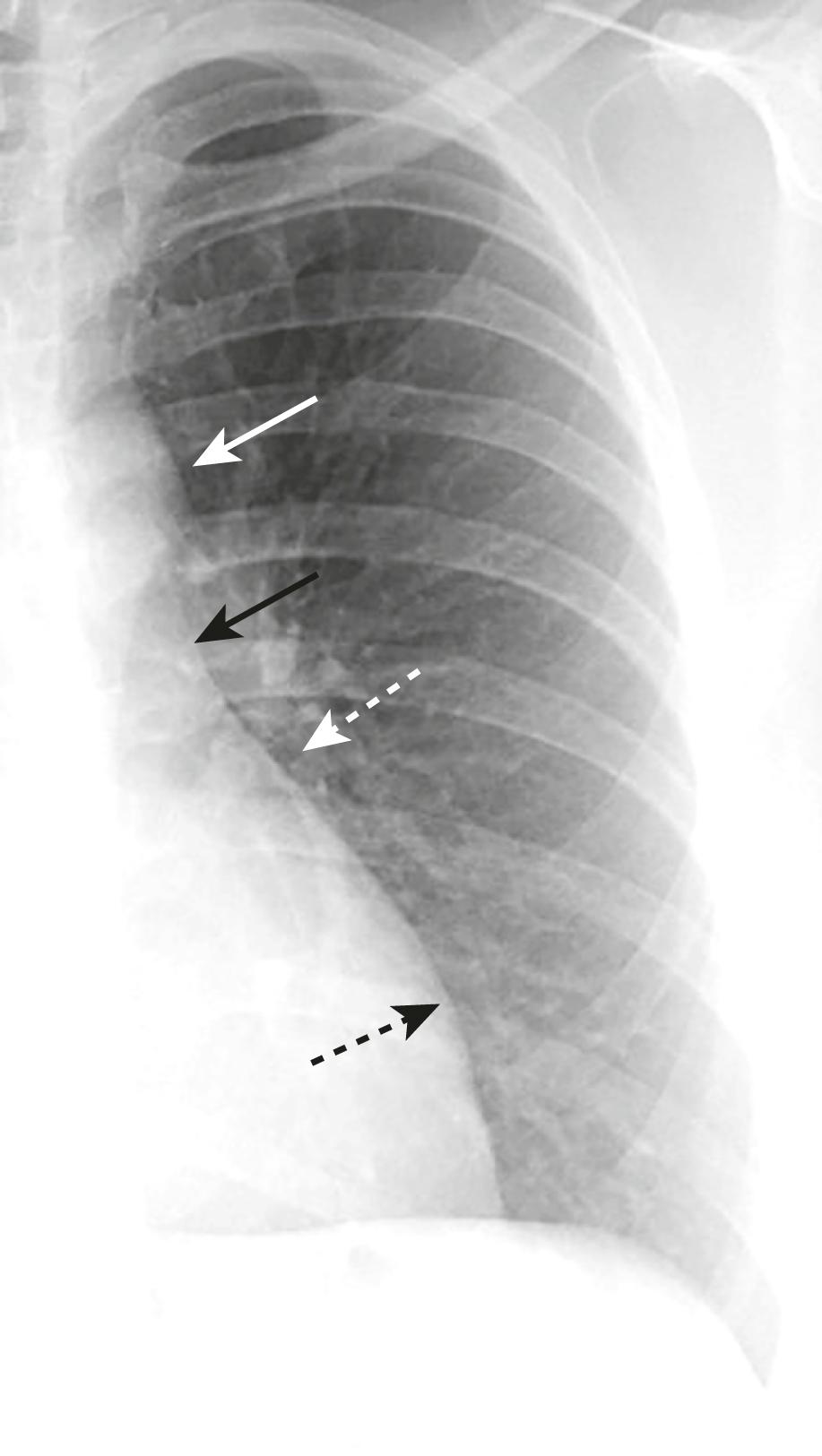
We can measure the size of the aortic knob. In normal people, the aortic knob measures less than 35 mm when measured from the lateral border of the air in the trachea to the lateral border of the aortic knob ( eFig. B.6 ).
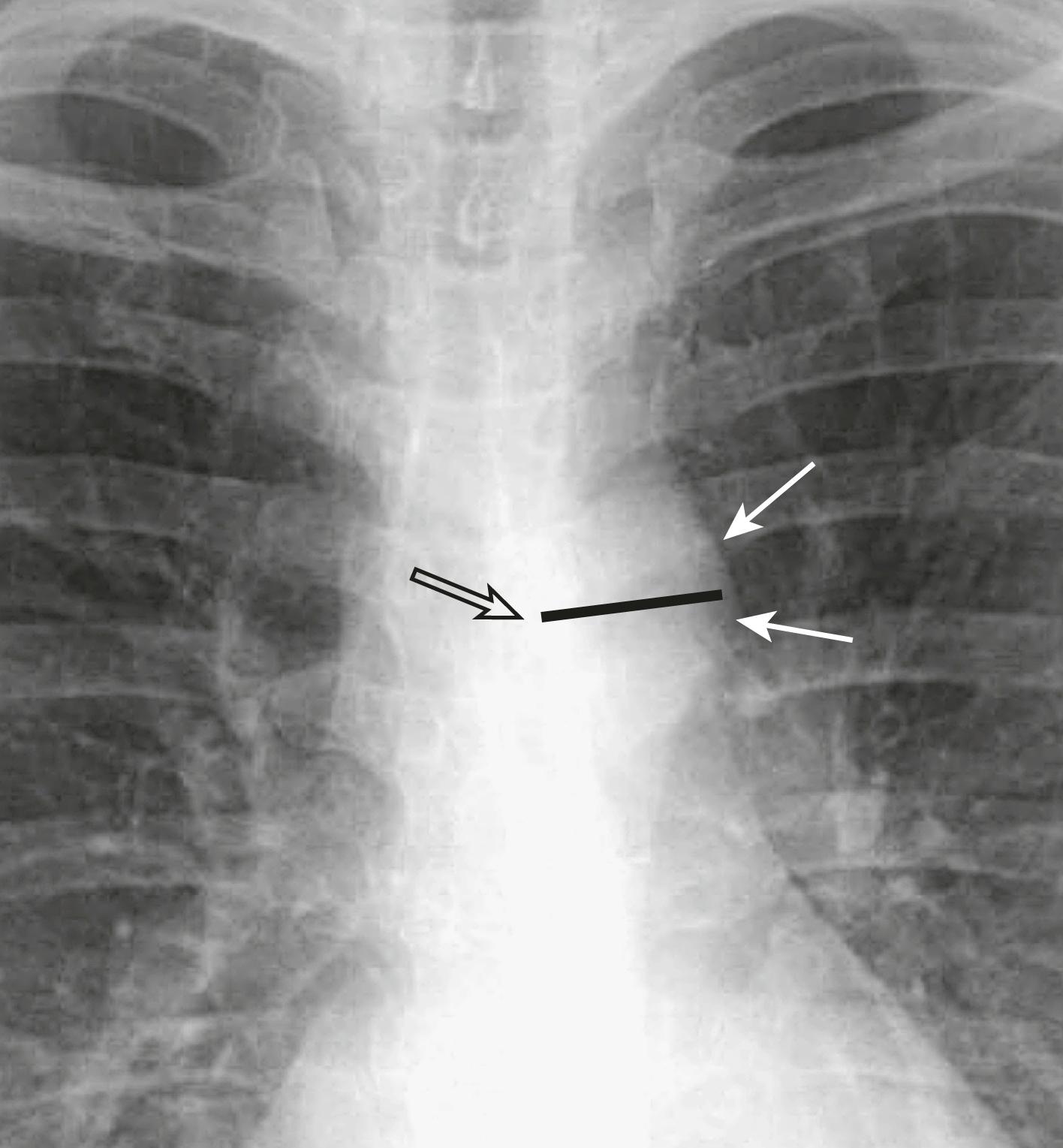
The knob can be greater than 35 mm due to increased pressure, flow, or changes in the elasticity of the wall of the aorta such as in systemic hypertension, cystic medial necrosis, or aortic dissection.
The next contour below the aortic knob is the main pulmonary artery (see eFig. B.5 ).
The main pulmonary artery (MPA) is the keystone of this entire system.
First, we must be able to find the main pulmonary artery segment. Then, we can measure it.
Find the main pulmonary artery by locating the adjacent “squiggly” vessels that represent branches of the left pulmonary artery.
These branches of the left pulmonary artery are always immediately adjacent to the main pulmonary artery ( eFig. B.7 ).
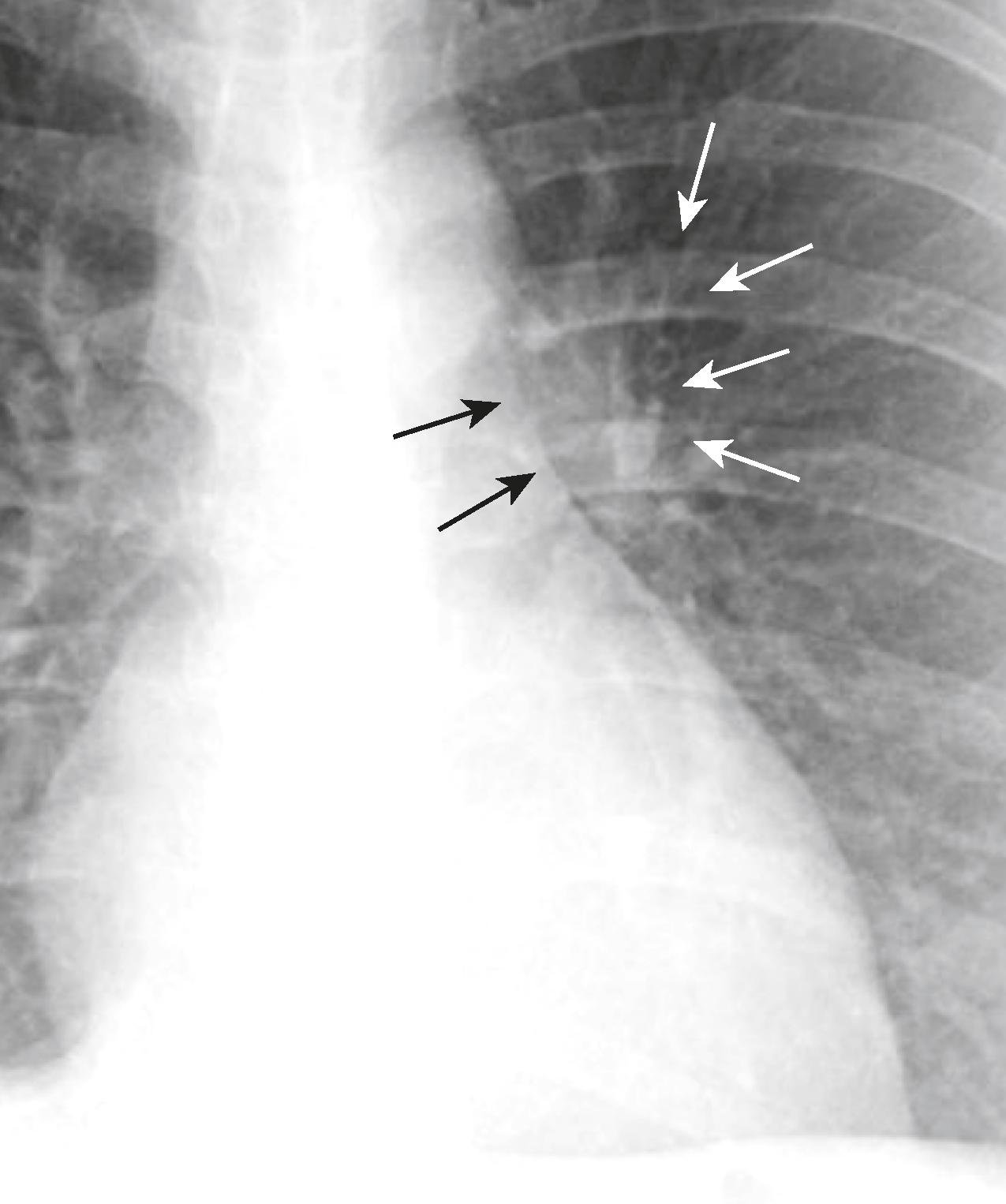
We can evaluate the main pulmonary artery by drawing a tangent line (real or imaginary) from the apex of the left ventricle to the aortic knob and then assessing the distance between the main pulmonary artery and the tangent line ( eFig. B.8 ).
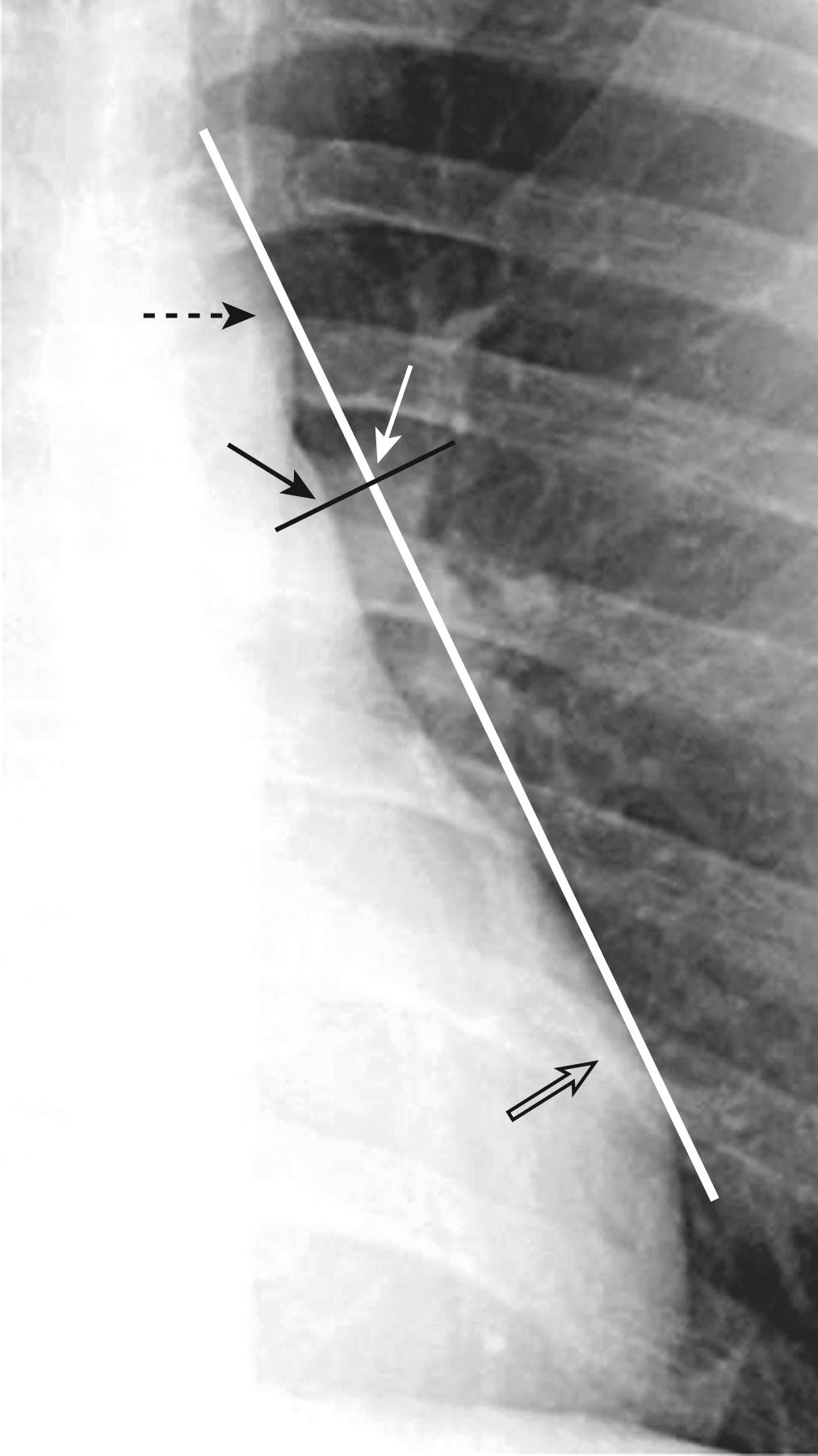
Normally, the main pulmonary artery should not project beyond the tangent line.
Young females may have normal prominence of the main pulmonary artery but it rarely projects beyond the tangent line.
It is also true that the MPA normally is not indented more than 15 mm away from the tangent line (see eFig. B.8 ).
This range of normal values establishes two major categories of abnormality in this system:
First, the main pulmonary artery projects beyond the tangent line.
This can occur if there is increased pressure or increased flow in the pulmonary circulation ( eFig. B.9 ).
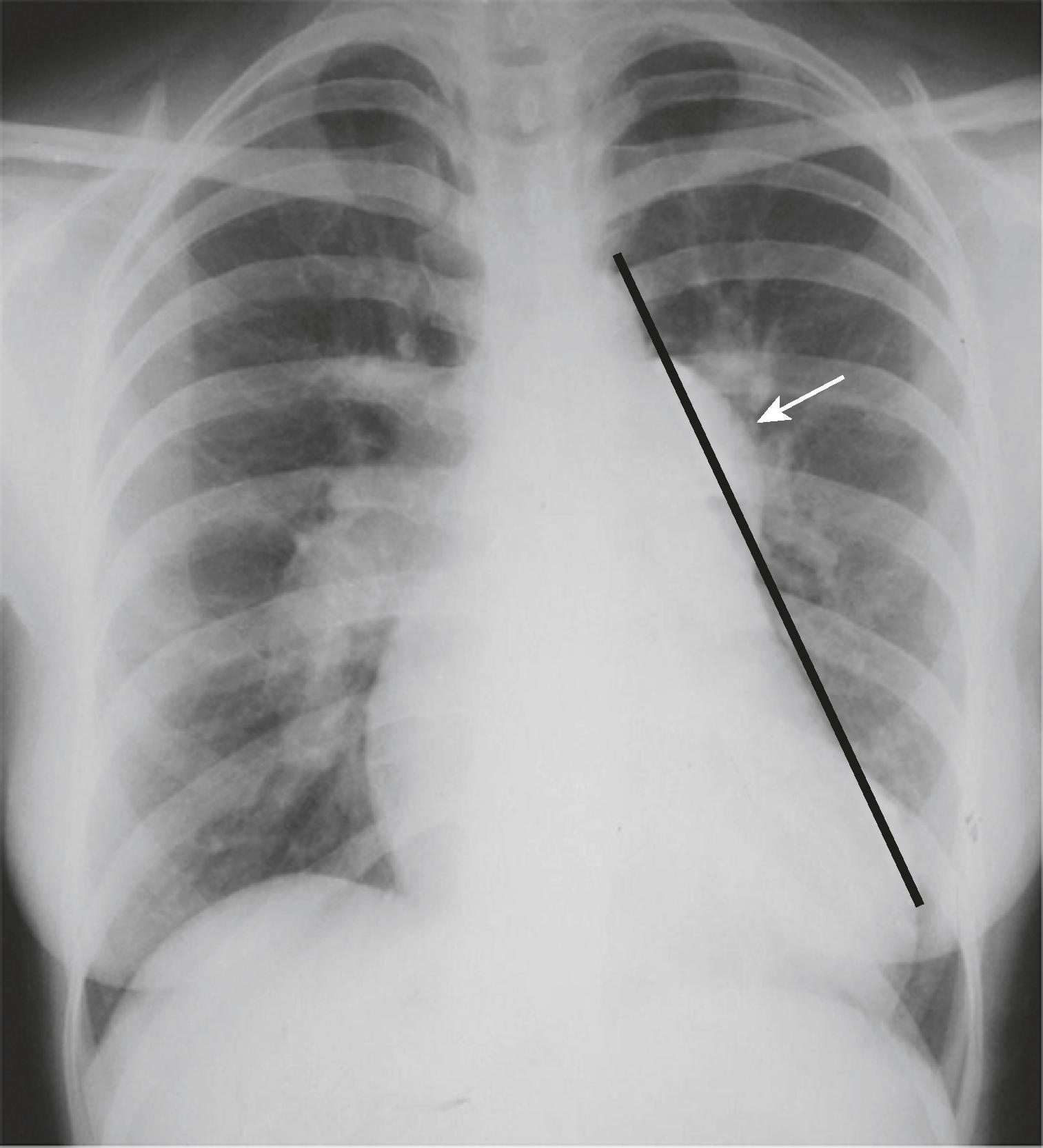
Second, the main pulmonary artery may be indented more than 15 mm medial to the tangent line ( eFig. B.10 ).
This can occur for two main reasons:
First, the main pulmonary artery may appear to be more indented from the tangent line because either the left ventricle and/or aortic knob is enlarged and pushes the tangent line away from pulmonary artery. This is very common in adults and can occur with atherosclerosis and systemic hypertension.
Second, there is something intrinsically abnormal with the pulmonary artery such as absence or hypoplasia of the pulmonary artery that occurs in tetralogy of Fallot or truncus arteriosus. These are uncommon diseases in adults.
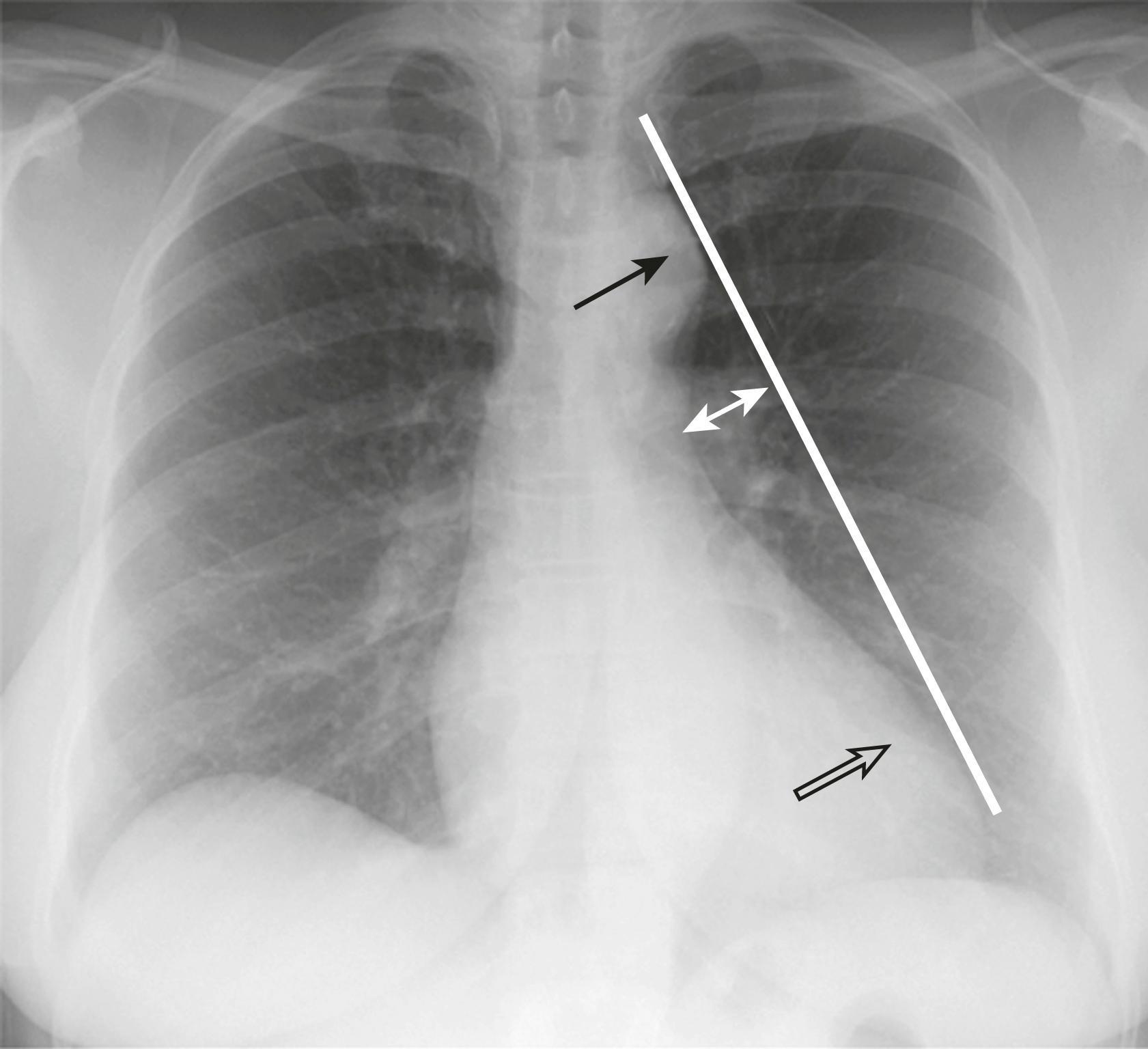
Become a Clinical Tree membership for Full access and enjoy Unlimited articles
If you are a member. Log in here